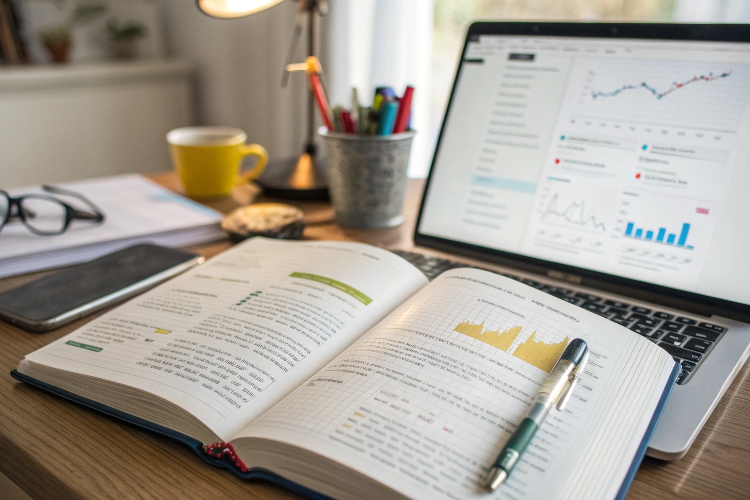Blog
The Best On-Page SEO Techniques for Higher Rankings.
Digital Marketing & Branding ▪ 2025-03-20

On-page SEO is one of the most crucial aspects of search engine optimization. Unlike off-page SEO, which focuses on backlinks and external factors, on-page SEO is all about optimizing your website’s content, structure, and HTML elements to improve rankings on search engines like Google.
By implementing the best on-page SEO techniques, you can boost organic traffic, enhance user experience, and improve your website’s authority in search results.
In this guide, we’ll explore top on-page SEO strategies, including keyword optimization, meta tags, content structuring, internal linking, schema markup, and more to help your website rank higher on Google.
1️⃣ What is On-Page SEO?
🚀 On-page SEO refers to the process of optimizing individual web pages to rank higher in search engine results.
✅ Why is On-Page SEO Important?
✔ Helps search engines understand your content better.
✔ Improves website visibility and rankings for target keywords.
✔ Enhances user experience (UX) and keeps visitors engaged.
✔ Boosts organic traffic by making content more accessible.
✔ Increases conversion rates by optimizing content structure.
💡 Example: A well-optimized product page with SEO-friendly titles, descriptions, and schema markup can rank higher in Google searches.
🔗 Pro Tip: On-page SEO is an ongoing process—regularly update and optimize your pages for better rankings.
2️⃣ The Best On-Page SEO Techniques for Higher Rankings
🚀 Follow these on-page SEO techniques to improve search rankings and drive more organic traffic.
📌 Step 1: Optimize Title Tags for SEO
✔ Keep title tags under 60 characters for better visibility.
✔ Include primary keywords at the beginning of the title.
✔ Make it engaging and click-worthy to improve CTR (Click-Through Rate).
💡 Example: "Best On-Page SEO Techniques for Higher Rankings (2025 Guide)"
🔗 Pro Tip: Avoid duplicate title tags—each page should have a unique, keyword-rich title.
📌 Step 2: Write Compelling Meta Descriptions
✔ Use target keywords naturally in the meta description.
✔ Keep it between 150-160 characters for optimal display.
✔ Make it engaging, actionable, and informative.
💡 Example: "Discover the best on-page SEO techniques to boost your website’s rankings and drive more organic traffic with expert strategies."
🔗 Pro Tip: Well-optimized meta descriptions improve CTR, leading to higher rankings.
📌 Step 3: Optimize URL Structure for SEO
✔ Keep URLs short, clean, and descriptive.
✔ Use hyphens (-) instead of underscores (_) in URLs.
✔ Include primary keywords in the URL.
💡 Example: "yourwebsite.com/on-page-seo-techniques" instead of "yourwebsite.com/page?id=1234"
🔗 Pro Tip: Avoid unnecessary stop words like “the,” “and,” or “of” in URLs.
📌 Step 4: Use Header Tags (H1, H2, H3) Properly
✔ H1 Tag: Use only one H1 tag per page with the primary keyword.
✔ H2 & H3 Tags: Structure content using H2 and H3 subheadings.
✔ Make headers informative to improve readability.
💡 Example:
✅ H1: "Best On-Page SEO Techniques for Higher Rankings"
✅ H2: "How to Optimize Title Tags for SEO"
✅ H3: "Best Practices for Writing SEO-Friendly Titles"
🔗 Pro Tip: Proper header usage improves content structure and SEO rankings.
📌 Step 5: Optimize Content for Target Keywords
✔ Place primary keywords naturally in the first 100 words of content.
✔ Use semantic keywords (LSI keywords) to avoid keyword stuffing.
✔ Maintain a keyword density of 1-2% for natural optimization.
✔ Focus on long-tail keywords for better ranking opportunities.
💡 Example: If your main keyword is "SEO techniques," include variations like "best SEO practices" and "on-page SEO strategies."
🔗 Pro Tip: Use tools like SurferSEO or Clearscope to optimize content with the right keywords.
📌 Step 6: Optimize Images for SEO
✔ Compress images using TinyPNG or ShortPixel to reduce load time.
✔ Use descriptive alt text with keywords for better image rankings.
✔ Implement WebP format for faster loading speeds.
💡 Example: Image file name: "on-page-seo-techniques.jpg" instead of "IMG_1234.jpg"
🔗 Pro Tip: Optimized images improve page speed, user experience, and rankings.
📌 Step 7: Internal Linking for SEO
✔ Add 3-5 internal links per blog post to boost engagement.
✔ Link to relevant, high-authority pages within your website.
✔ Use descriptive anchor text instead of generic terms like "click here."
💡 Example: "Learn more about technical SEO strategies."
🔗 Pro Tip: Internal linking reduces bounce rates and improves site structure.
📌 Step 8: Improve Page Speed & Performance
✔ Enable browser caching to load pages faster.
✔ Use a Content Delivery Network (CDN) like Cloudflare.
✔ Optimize JavaScript & CSS files to reduce page load time.
✔ Use Google PageSpeed Insights to test and improve speed.
💡 Example: A website that loads in under 2 seconds ranks higher than slow-loading pages.
🔗 Pro Tip: Use GTmetrix to identify and fix slow-loading elements.
📌 Step 9: Implement Schema Markup for Rich Results
✔ Use FAQ Schema to appear in Google’s People Also Ask section.
✔ Add Review Schema to show star ratings in search results.
✔ Use Breadcrumb Schema to improve navigation and CTR.
💡 Example: A recipe website using Recipe Schema can display cooking time, ingredients, and reviews in search results.
🔗 Pro Tip: Use Google’s Structured Data Testing Tool to validate schema markup.
📌 Step 10: Make Content Mobile-Friendly
✔ Use responsive design for seamless mobile browsing.
✔ Avoid intrusive pop-ups that affect user experience.
✔ Ensure text is readable without zooming on mobile devices.
💡 Example: Google ranks mobile-friendly websites higher in mobile search results.
🔗 Pro Tip: Use Google’s Mobile-Friendly Test to check if your site is optimized.
Final Thoughts: Mastering On-Page SEO for Higher Rankings
🚀 On-page SEO is the foundation of a well-optimized website that ranks higher in search results.
Key Takeaways:
✅ Optimize title tags, meta descriptions, and URLs with relevant keywords.
✅ Use header tags (H1, H2, H3) for content structure and readability.
✅ Add internal links and optimize images with proper alt text.
✅ Improve page speed, use schema markup, and ensure mobile-friendliness.
✅ Create high-quality, keyword-optimized content that engages users.

